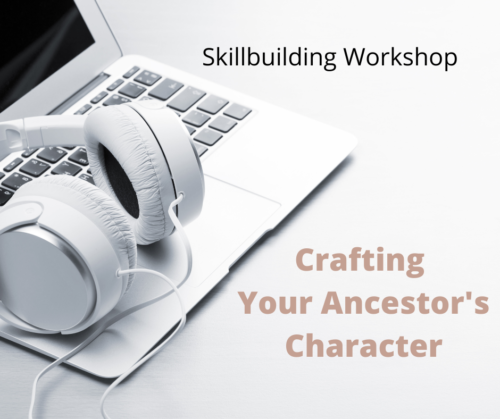One of the fundamental components of any good family history story is recognizing a conflict your ancestor faced in their life and bringing that to the front of the story. Without conflict, there is no story. Story is built around a conflict, a challenge and the obstacles your character faces in pursuit of his goal. It’s crucial in keeping your reader engaged to the end. It creates a story question. How does my ancestor overcome this conflict, this challenge? The reader wants the answer and, for this reason, stays with the story to the end.
By the end of the beginning of your story, you want your readers to understand your ancestor’s challenge and how they intend to overcome this problem.
Let’s create an ancestor, Henry Jones, for the purposes of demonstrating conflict and obstacles, and follow him through a story plot. Of course, in your own family history, you’re going to pull this information from your research.
We start by understanding Henry’s goal.
Henry’s Goal: Henry Jones wants to own land.
Of course, in order for this story to be a story there must be some conflict, some challenge in Henry’s pursuit of that goal.
Henry’s Conflict– Henry cannot own land in his current country, land is owned by the wealthy, Henry is a peasant and will spend his life farming the land of the wealthy.
The First Turning Plot Point – this is the moment when your ancestor changes his path in pursuit of his goal. This is also often called the inciting incident.
Henry’s First turning point – Henry makes the decision to emigrate to the New World, where land is plentiful.
Obstacles
In our family history story, obstacles block our ancestor on their path to achieving their goals. In a story plot, they are often referred to as plot points.
There are three types of obstacles that your ancestor may confront:
ancestor vs. another person
ancestor vs. circumstance
ancestor vs. self
What is the difference between conflict and obstacle?
The conflict is the overall idea; Henry cannot own land. While obstacles are those roadblocks that stand between Henry resolving his desire to own land.
Keep in mind that both conflicts and obstacles may be both internal and external, they can come from within the protagonist or from external forces, friendly and not so friendly.
If we continue to follow the example above, our ancestor Henry who wished to own land may come up against many obstacles.
Henry’s Obstacles
Obstacle 1 – Henry arrives in United States, there is plenty of land but he must head west, Henry has no money to get there. He overcomes this obstacle by getting a job. ancestor vs. circumstance
Obstacle 2 – He’s saving his money and close to leaving when he meets the love of his life. But, Mary doesn’t want to leave her family behind and travel west for land; Henry must convince her this decision is in their best interest. ancestor vs. another person
Obstacle 3 – Along the way they fall on hardships, and Henry doubts his choices. Ancestor vs. self
Obstacle 4 – There journey is delayed by a violent storm. ancestor vs. circumstance
These obstacles are plot points in our story and keep our reader compelled to keep reading. The obstacles tell a story, but also show growth of your ancestor, from poor to rich, sad to happy, hate to love, weak to strong.
Look at your research, what obstacles did your ancestor’s face in pursuit of their goals?


This is exactly what I needed for my next step! My Revolutionary persons (not yet proved as ancestors) was Captain Reuben Dickinson and his son Reuben of Amherst area in Massachusetts. After the Revolution he was involved in Shay’s Rebellion and ended up having to “high tail” it to Vermont. There’s not a whole lot written about him although I am slowly gathering bits and pieces from here and there. So far my title is “To Walk in Freedom” and I’ve been working on their time lines. Thanks so much!